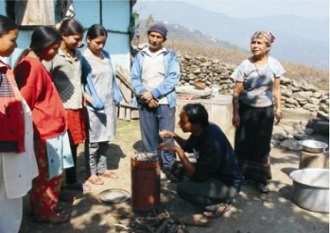Feb 7, 2011 – A wood-burning stove in your home may be a great source of heat during the cold winter, but new data shows that invisible particles produced by burning wood may cause cancer and heart disease, the Telegraph reported.
Wood-burning stoves are becoming more popular because of the rising price of oil, gas and electricity prices. But researchers at Copenhagen University in Denmark said that breathing in air around the stoves is the equivalent to inhaling car exhaust—with the wood particles being small enough to breathe into the deepest parts of the lungs.
“The particles that come from wood smoke can certainly cause fatal heart or lung disease. In human cells that were exposed to the particles, substantial DNA damage and mutation took place. It was comparable to the effects of particles given off by traffic,” said professor Steffen Loft, of the Department of Public Health at Copenhagen University.
When scientists tested the wood-burning particles on human cells in a laboratory, they found that the particles caused more cellular and DNA damage than air without the particles.
“The full scale of the health risk is not currently known,” Loft said, “but said some people were already feeling the impact, such as those suffering from asthma.”
Loft emphasized that those who do own wood-burning stoves should only use dry wood cut into small pieces, and make sure there is a good air flow in the room to minimize exposure to particles.
http://www.foxnews.com/health/2011/02/07/wood-stoves-cause-cancer-heart-disease/




